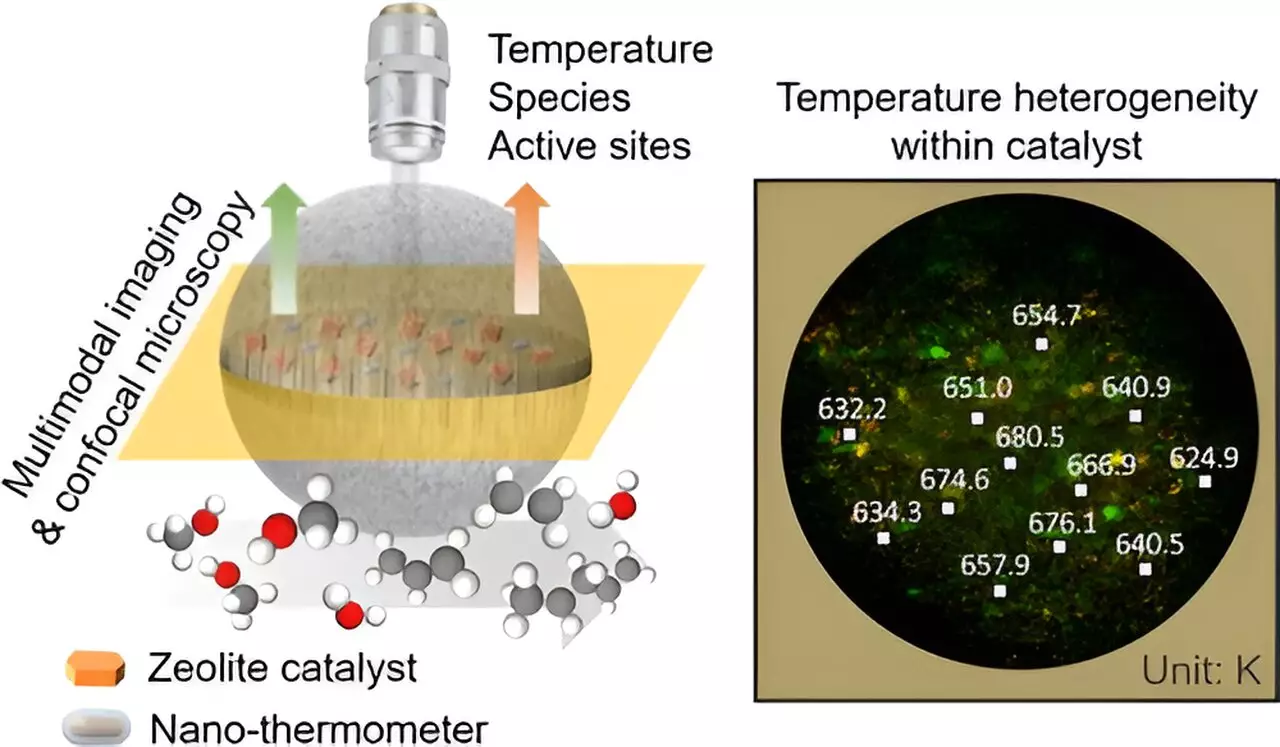Temperature plays a crucial role in chemical reactions, influencing both thermodynamics and kinetics. Researchers at the Dalian Institute of Chemical Physics have developed a groundbreaking method for measuring temperature distribution inside individual catalyst particles.
Traditional methods of temperature measurement in catalyst particles have been limited to surface readings with low spatial resolution. However, the new imaging technique developed by the research team offers a spatial resolution of 800 nm, allowing for the dynamic measurement of temperature distribution within industrial zeolite catalyst particles during reactions.
The researchers implanted up-conversion nano-thermometers into catalyst particles using a microfluidic chip, enabling them to visualize temperature distribution in three dimensions. By combining confocal fluorescence and confocal infrared microscopy, they were able to study the effects of zeolite content and particle size on temperature distribution.
Through their studies, the researchers were able to observe how temperature distribution affects the utilization of active sites and the evolution of reaction intermediates during the methanol-to-olefins reactions. This information is crucial for understanding heat transfer within catalyst particles and optimizing industrial catalysis processes.
The development of this innovative temperature measurement technique opens up new possibilities for the design and optimization of industrial catalysts. By gaining insights into temperature distribution within catalyst particles, researchers can work towards improving the efficiency and effectiveness of catalytic processes.
Overall, the method developed by the research team at the Dalian Institute of Chemical Physics represents a significant advancement in the field of catalysis. By providing a deeper understanding of temperature effects on reactions at the microscopic level, this technique has the potential to drive future innovations in industrial catalyst design and optimization.


Leave a Reply